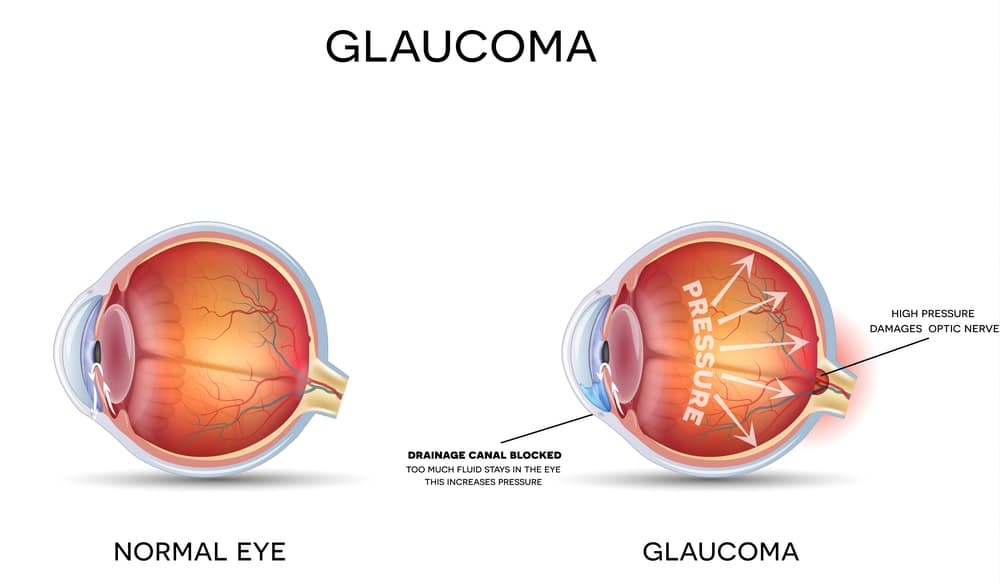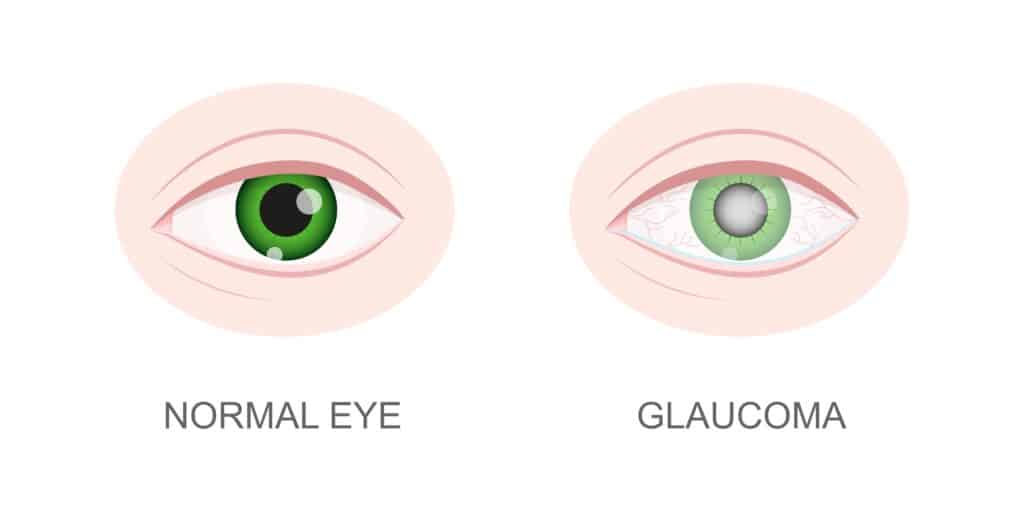
According to the American Academy of Ophthalmology, “Glaucoma is a disease that damages your eye’s optic nerve.” This eventually leads to blind spots with the risk of complete blindness. There are four major types of glaucoma which include open-angle glaucoma, angle-closure glaucoma, congenital glaucoma, and secondary glaucoma.
While there is no cure for glaucoma, the good news is you can slow down the progression of this eye disease if caught early. That’s why it’s important to be aware of the beginning signs glaucoma will display.
Keep reading to learn about the first sign of glaucoma.
What Is the First Sign of Glaucoma?
One of the first signs of glaucoma is distorted or blurred peripheral vision. You may even notice different colored halos appearing around light-sourced objects within your field of vision. This change in your vision may seem subtle at first, and you may not think much about it.
That’s why it’s important to visit your optometrist or ophthalmologist anytime you notice even the slightest changes to your vision.

Early Stage Glaucoma Symptoms:
While vision loss is the most common symptom of early glaucoma, there are some other signs to look out for.
The first sign of glaucoma may include:
- Eye Pain
- Recurring Headaches
- Eye Redness
- Nausea
- Vomiting
What Is the Main Cause of Glaucoma?
The main cause of glaucoma is eye pressure on the optic nerve. This occurs due to fluid buildup when your eye cannot properly drain.
In open-angle glaucoma (the most common type of glaucoma), this increase in eye pressure is subtle. When it comes to the other types of glaucomas, the eye pressure is sudden and often considered a medical emergency.
What Is the Best Treatment for Glaucoma?
Ophthalmologists will usually treat glaucoma with prescription eye drops, such as prostaglandins or beta blockers. These work by decreasing the pressure or fluid build-up in your eye and are taken daily.
Other Treatment Options to Help Glaucoma Go Away
While eye drops are the most common form of treatment, glaucoma is also sometimes treated with oral medications if the eye drops are not effective enough. In some cases, your ophthalmologist may even recommend procedures like laser therapy, drainage tubes, filtering surgery, and minimally invasive glaucoma surgery.

When Is It Too Late to Treat Glaucoma?
You may be wondering if it’s ever too late to treat glaucoma. Unfortunately, if you are already experiencing symptoms like vision loss, glaucoma cannot be treated, only slowed down.
According to Harvard Health Publishing, “an estimated 50% of glaucoma cases are undiagnosed.” This startling statistic should encourage people to receive their yearly eye exams, especially those who are 40 and over.
Schedule Your Eye Appointment at ClearChoice Lasik
While glaucoma is a serious diagnosis, early intervention can significantly increase your odds of stopping or slowing down vision loss. Be sure to watch for any signs of glaucoma, and don’t hesitate to seek medical advice if you’re concerned. If you’re ready for your professional eye exam, our trusted ophthalmologists at ClearChoice Lasik are here to help. Call us today to schedule an appointment, or contact us here for any other questions or inquiries.
References
Boyd, K. (2023, January 19). What is glaucoma? symptoms, causes, diagnosis, treatment. American Academy of Ophthalmology. https://www.aao.org/eye-health/diseases/what-is-glaucoma
Centers for Disease Control and Prevention. (2020, November 24). Don’t let glaucoma steal your sight! Centers for Disease Control and Prevention. https://www.cdc.gov/visionhealth/resources/features/glaucoma-awareness.html













